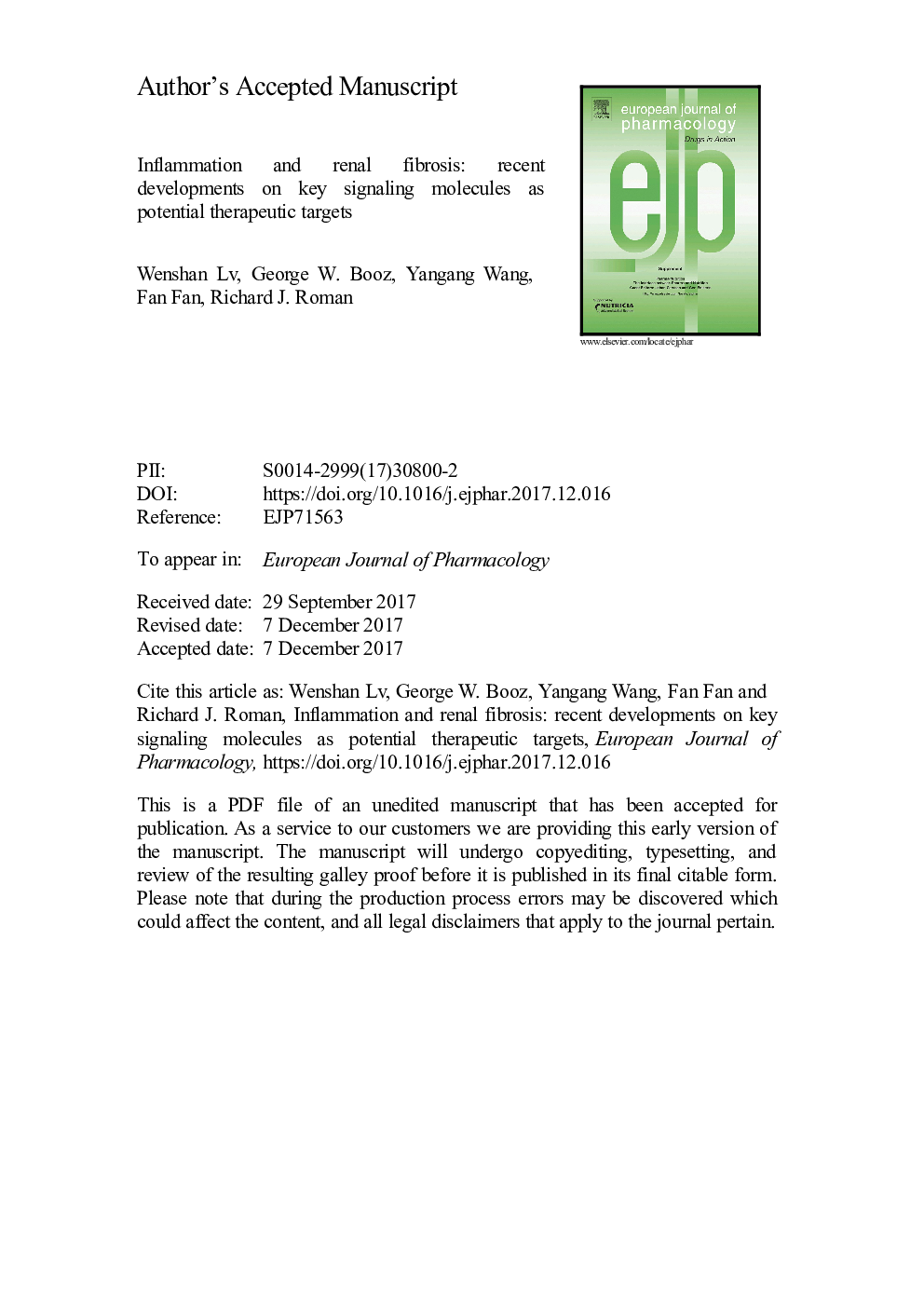| کد مقاله | کد نشریه | سال انتشار | مقاله انگلیسی | نسخه تمام متن |
|---|---|---|---|---|
| 8529468 | 1558860 | 2018 | 41 صفحه PDF | دانلود رایگان |
عنوان انگلیسی مقاله ISI
Inflammation and renal fibrosis: Recent developments on key signaling molecules as potential therapeutic targets
ترجمه فارسی عنوان
التهاب و فیبروز کلیوی: پیشرفت های اخیر در مولکول های سیگنالینگ کلیدی به عنوان اهداف بالقوه درمانی
دانلود مقاله + سفارش ترجمه
دانلود مقاله ISI انگلیسی
رایگان برای ایرانیان
کلمات کلیدی
بیماری مزمن کلیوی، التهاب فیبروز کلیه، درمان ضد انفوزیون، سیتوکین ها،
موضوعات مرتبط
علوم زیستی و بیوفناوری
علم عصب شناسی
علوم اعصاب سلولی و مولکولی
چکیده انگلیسی
Chronic kidney disease (CKD) is a major public health issue. At the histological level, renal fibrosis is the final common pathway of progressive kidney disease irrespective of the initial injury. Considerable evidence now indicates that renal inflammation plays a central role in the initiation and progression of CKD. Some of the inflammatory signaling molecules involved in CKD include: monocyte chemoattractant protein-1 (MCP-1), bradykinin B1 receptor (B1R), nuclear factor κB (NF-κB), tumor necrosis factor-α (TNFα), transforming growth factor β (TGF-β), and platelet-derived growth factor (PDGF). Multiple antifibrotic factors, such as interleukin-10 (IL-10), interferon-γ (IFN-γ), bone morphogenetic protein-7 (BMP-7), hepatocyte growth factor (HGF) are also downregulated in CKD. Therefore, restoration of the proper balance between pro- and antifibrotic signaling pathways could serve as a guiding principle for the design of new antifibrotic strategies that simultaneously target many pathways. The purpose of this review is to summarize the existing body of knowledge regarding activation of cytokine pathways and infiltration of inflammatory cells as a starting point for developing novel antifibrotic therapies to prevent progression of CKD.
ناشر
Database: Elsevier - ScienceDirect (ساینس دایرکت)
Journal: European Journal of Pharmacology - Volume 820, 5 February 2018, Pages 65-76
Journal: European Journal of Pharmacology - Volume 820, 5 February 2018, Pages 65-76
نویسندگان
Wenshan Lv, George W. Booz, Yangang Wang, Fan Fan, Richard J. Roman,
